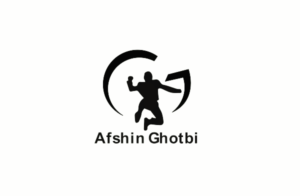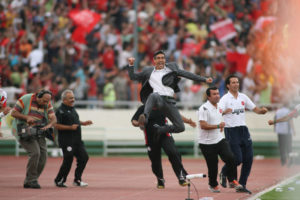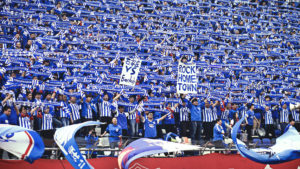Overshadowed by the Japan Football Association’s declaration 10 years ago that it wanted to win the World Cup by 2050 was another pledge that seemed more easily achievable: having the team ranked in the top 10 by 2015.
There is still plenty of time for the World Cup, but time is running out to meet that top-10 goal. Currently, Japan is ranked 53rd in the world by FIFA.
That ranking may be an unfair reflection on how strong the team actually is as it prepares for a friendly on Friday against Tunisia in Oita, Japan. But over the last few months, Japanese soccer has hit turbulence after a decade of relatively smooth and impressive growth.
Five years after establishing the professional J. League, the national team made its World Cup debut in 1998. Co-hosting the tournament with South Korea and reaching the second round in 2002 was another milestone. Japan arrived in Germany for the 2006 World Cup carrying high hopes as the Asian champion, but it never recovered after a dramatic 3-1 loss to Australia in the opening game. The tournament was, however, viewed as a valuable lesson on how mistakes get punished at the top level of international soccer.
Under the Japanese coach Takeshi Okada, the 2010 team made it to the knockout round as it recorded its first World Cup victories on foreign soil. It narrowly missed reaching the final eight in South Africa after losing a penalty shootout against Paraguay.
The experienced Italian coach Alberto Zaccheroni took over in September 2010. After leading the team to the 2011 Asian Cup and strolling through qualification for the 2014 World Cup, there was talk of a quarterfinal finish in Brazil. Instead, the team flopped at the World Cup last year and collected just one point. After high expectations, it was a huge disappointment.
Critics talked of a talented but predictable team lacking a spark, along with the ability to impose its own style of play in tough conditions. “What Japan possesses in organization, hard work and discipline, it lacks in originality, identity and creativity,” said Afshin Ghotbi, the former national team coach of Iran and the manager of the J-League club Shimizu S-Pulse from 2011 to 2014. “Organization, discipline and hard work will only take you so far. Then you need innovation, and that is something still rare in Japanese football.”
In August, Japan appointed Javier Aguirre, the tough-talking two-time coach of Mexico, to succeed Zaccheroni. Aguirre talked of introducing “street smarts” to the technically polished Japanese team as it prepared for the 2018 World Cup. The 2015 Asian Cup was the first major test, but it ended with another disappointment as Japan exited at the quarterfinal stage at the hands of the United Arab Emirates. It was the team’s worst performance in the tournament since 1996.
In February, Japan fired Aguirre after he was implicated in a match-fixing scandal over his tenure as coach of the Spanish club Real Zaragoza in 2011. Vahid Halilhodzic of Bosnia was appointed coach in February, the third foreign boss in the span of nine months.
With the national team in an unusual state of flux, soccer fans in Japan have not found much comfort with the J-League, either. Its clubs are struggling in the Asian Champions League, the continent’s premier club competition.
After three rounds of the tournament’s group stage, three of the country’s four representatives have yet to win a game. The recent rise of wealthy Chinese clubs buying top-class foreign talent that Japanese teams can’t afford is posing a huge challenge.
“At the moment, the J-League can’t compete with Chinese clubs financially,” said Beijing Guoan striker Dejan Damjanovic, one of the most successful European players in Asia in recent times. “Japan must try to attract and keep its best foreign talent. The domestic players are still very good, but in Asia, foreign players can make a big difference in many games.”
Still, there is good news coming out of Japan. The country’s youth development system is still the envy of Asia, with 12 out of the 23 players on last year’s World Cup roster playing in the bigger European leagues, including some at elite clubs, like Shinji Kagawa, Keisuke Honda and Yuto Nagatomo. There are gaps, however.
“Not all positions are the same,” Maya Yoshida, a defender with Southampton in the Premier League, told the English newspaper The Independent earlier this month. “The most difficult for Japanese people are striker, center-back and goalkeeper.
“There are many Japanese midfielders and fullbacks, but the key positions are not as easy.”
These are issues that other nations in Asia would love to have, but according to Ghotbi — as well as the federations’s declaration in 2005 — Japan wants to use the world, and not just Asia, as its yardstick for measuring success.
“The future is bright, as Japan is one of the most organized nations in the world,” Ghotbi said. “Japanese players are technical, hard working, mobile and versatile. The challenge is not just to be the best in Asia but to be one of the best in the world.”
Halilhodzic has much work to do as the new coach, but he has a good chance to get off to a strong start against Tunisia on Friday and against Uzbekistan in another friendly four days later.
J.F.A bosses hope the Bosnian can replicate the success he had with Algeria in 2014, when he took an aggressive, fast and skilful team to the second round of the World Cup, including an impressive performance against the eventual winner, Germany.
“I was able to get Algeria to No.17 in the rankings, and I want to do the same for Japan,” Halilhodzic said in his first Tokyo press conference.
That may not be top 10, but it would certainly do for now.
A version of this article appears in print on March 27, 2015, in The International New York Times. Order Reprints





